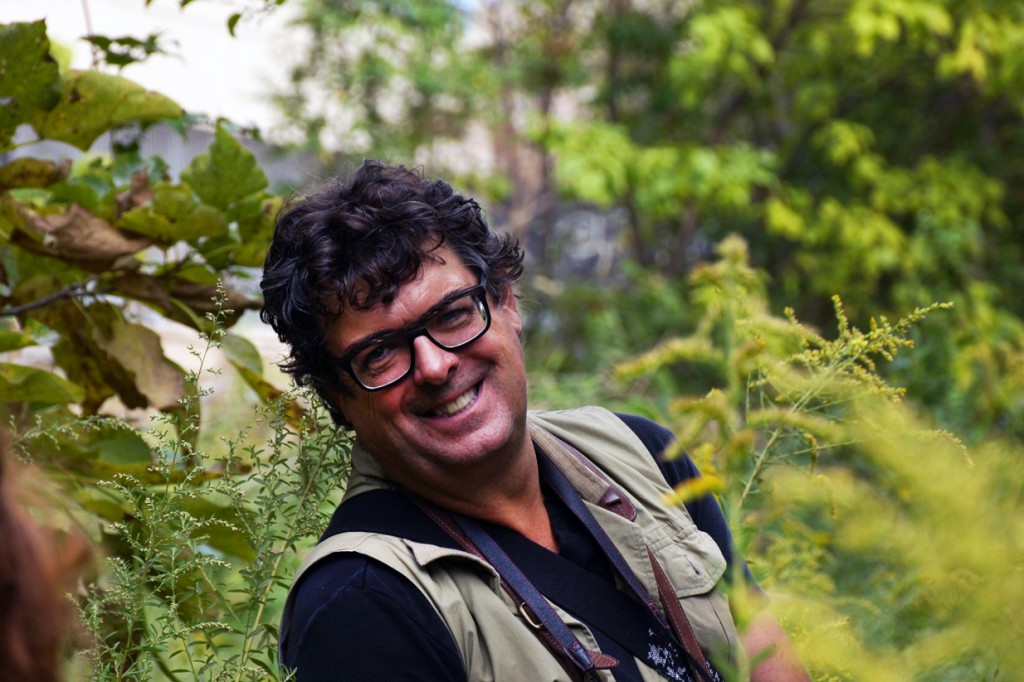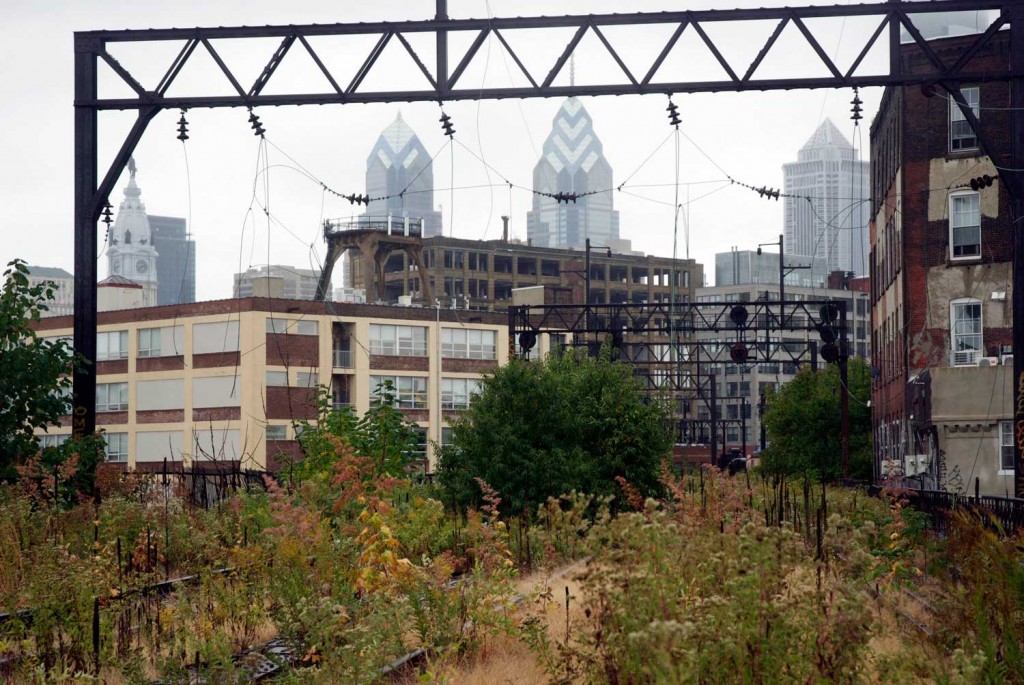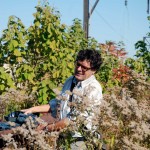by Annik LaFarge
on May 30, 2014
Over the past few days I’ve been taking booksellers in town for Book Expo America on walking tours of the High Line. As part of my preamble, I always find myself talking about High Line: The Inside Story of New York City’s Park in the Sky, the 2011 book by Friends of the High Line co-founders Joshua David and Robert Hammond. I re-read this book every year because it puts me in a good mood and makes me feel optimistic about cities. The High Line faced such formidable resistance on so many fronts that it truly is a miracle that the thing exists at all. But in fact it now is inspiring other communities all over the world to believe in the possibility of creating innovative, people-friendly green spaces from post-industrial sites.
Which brings us back, once again, to the great Paul VanMeter, a driving force behind The Rail Park in Philadelphia. That project began with a dream to create a three mile urban greenway, part of which will be part elevated, like the High Line, and part of which will be submerged, in tunnels created more than 100 years ago by the Philadelphia & Reading Railroad. Paul died in February, but the project lives on. This week PBS Digital Studios released a short film about Paul and the Rail Park as part of its Unusual Spaces series. It’s an inspiring reminder that these unique, miraculous, places begin with someone’s passionate dream, and then take a decade or more to realize. The High Line is testament that it can be done, and the short film below bears witness to the dream unfolding. Give it a watch and you’ll see what I mean. To read more about Paul, click here.
http://vimeo.com/96593704
Tagged as:
friends of the high line,
paul van meter,
reading viaduct,
the rail park,
VIADUDCTgreene
{ }
by Annik LaFarge
on February 10, 2014

Paul VanMeter, September 2012, on the Reading Viaduct
I first met Paul VanMeter on a rainy day in Philadelphia in 2011. Rick Darke, our great mutual friend, had organized a visit to the Reading Viaduct with the gardening staff of Friends of the High Line. With unabating enthusiasm Paul led us through the streets of Philadelphia, stopping every few blocks to whip out his iPad to show a photograph of the very same spot where we stood, a century ago. Swiping the glass screen he conjured image after image: the giant Baldwin Locomotive Works, old bicycle and balloon factories, and a sprawling machine works that once made the stuff that fired Paul’s railroad dreams: steam hammers, hydraulic parts, boiler makers’ tools. [continue reading…]
Tagged as:
lonely high line,
paul van meter
{ }
by Annik LaFarge
on May 29, 2012

Philadelphia Skyline from the Reading Viaduct
Paul VanMeter, co-founder of VIADUCTgreene in Philadelphia, has written, with Leah Murphy, a fascinating article on “Placemaking” in the online journal Philadelphia Social Innovations. It begins: “Great, vital Places — capitalization intended — are imperative for cultivating creative and cultural life,” and goes on to explore what gives a building — or a former battlefield, a street, a park — its own particular, unique sense of place. They describe the responsibility that the transformers of place — citizen groups, urban planners — have to the community, arguing that “It’s up to the imaginations of placemakers to recognize the need for reprogramming our City’s treasures, retrofitting them to accommodate contemporary uses that will serve both to reinvent places and preserve their histories.” For them, a successful Place — one that merits a capital “P” — “has a distinctive identity and an integral connection to its physical, sociocultural and historical context.” The old and the new exist together, and enrich us all the more for their dual power.
Lately on this blog I’ve been writing about “Urban Greenway” projects around country that are transforming century-old corridors of industrial infrastructure into unique public arenas. Bridges and trestles once designed to carry trolleys, automobiles, freight, passenger, and mail trains, have been re-imagined, then recreated, into open spaces that serve a new community purpose. All of these places can be appreciated in two ways at once: as a metaphoric platform for teaching a community something of its history, and as a literal one for promenading — quite pleasantly, as it turns out — through our complex, modern cities. Of all the works-in-progress that I’m aware of, the one in Philadelphia is the most exciting, and a prime reason is that the people behind it — at VIADUCTgreene and the Reading Viaduct Project — have a deep understanding of this particular Place. That understanding informs everything they do.

Paul VanMeter
Over the past year I’ve made two visits to the old Reading Railroad’s elevated viaduct, both times led by Paul and his infectious enthusiasm for the Place (capitalization intended…). Paul never conducts a tour without an iPad, because just as important as the sights one can see now — former warehouses and industrial buildings, the Philly skyline (including William Penn himself, looking down on the city from a pedestal) — is the history of the railroad and the neighborhoods it once traversed. On the iPad are photos of sites we pass on our tour, from the historic Reading Terminal Market and the old Baldwin Locomotive Works to neighborhood streets in the Callowhill district 100 years ago. “See over there,” he points, “and now here,” swiping the iPad so it shows a black & white photo of a familiar but long-ago scene. We begin to understand the layers of place that surround us. Once the VIADUCTgreene project is a reality its three miles of underground tunnels and elevated park will enable visitors to traverse some 55 busy city blocks without crossing a single street. The city of Philadelphia will have a new stage for natives and tourists alike to stand upon and absorb its great history. [continue reading…]
Tagged as:
james corner,
paul van meter,
reading viaduct,
Section 3,
VIADUDCTgreene
{ }











